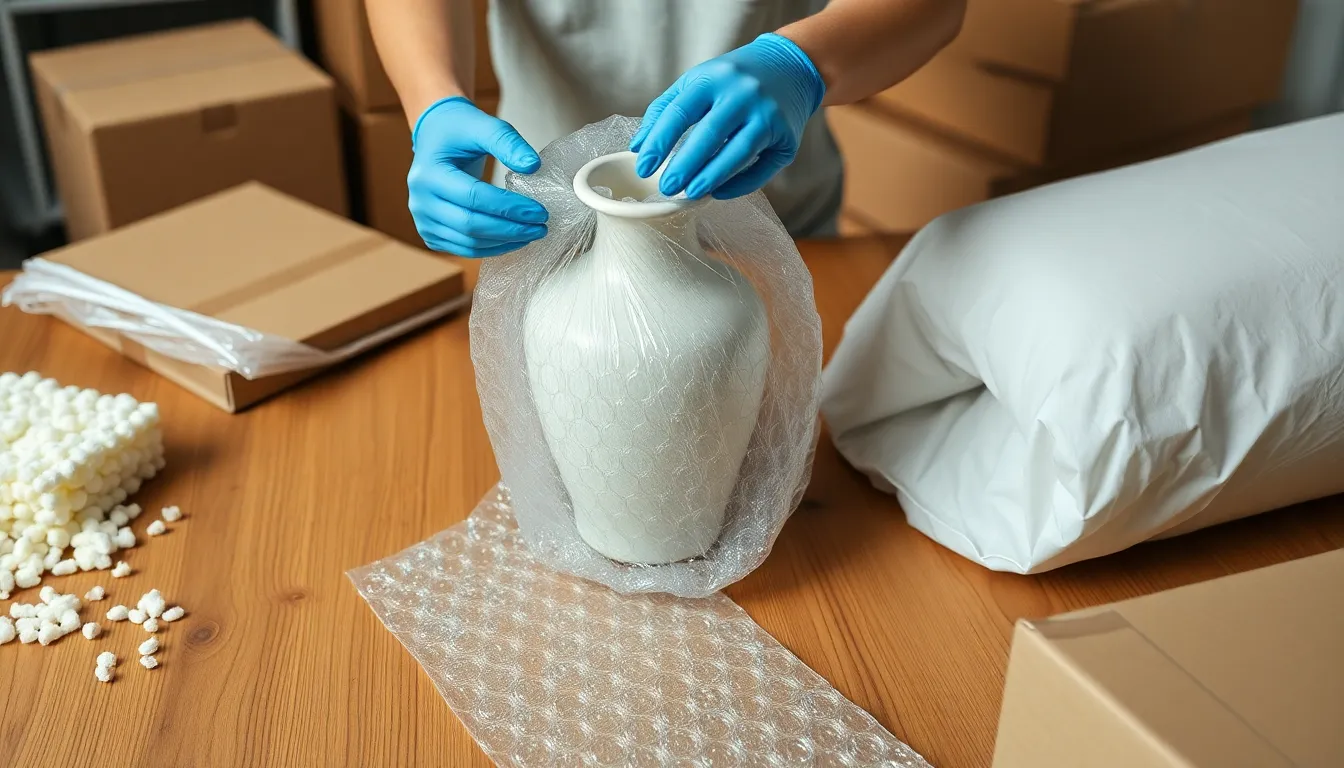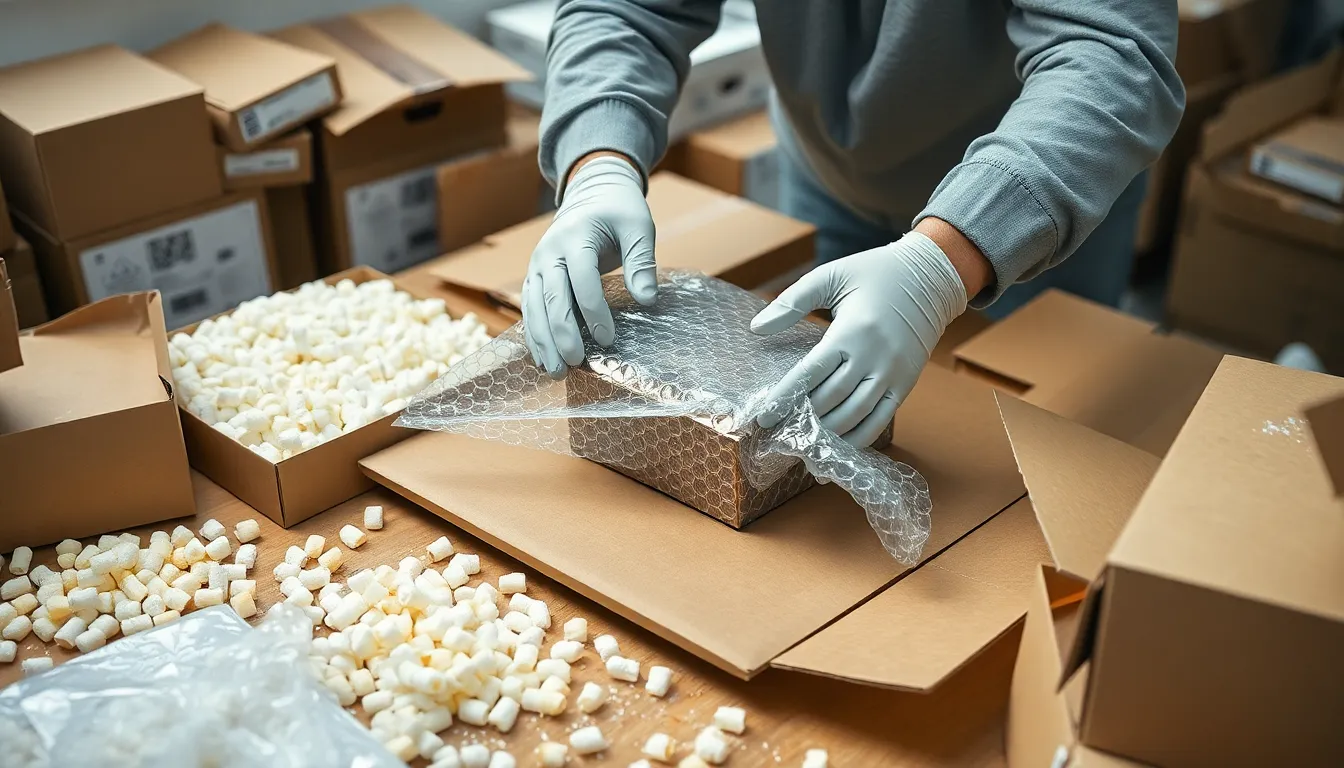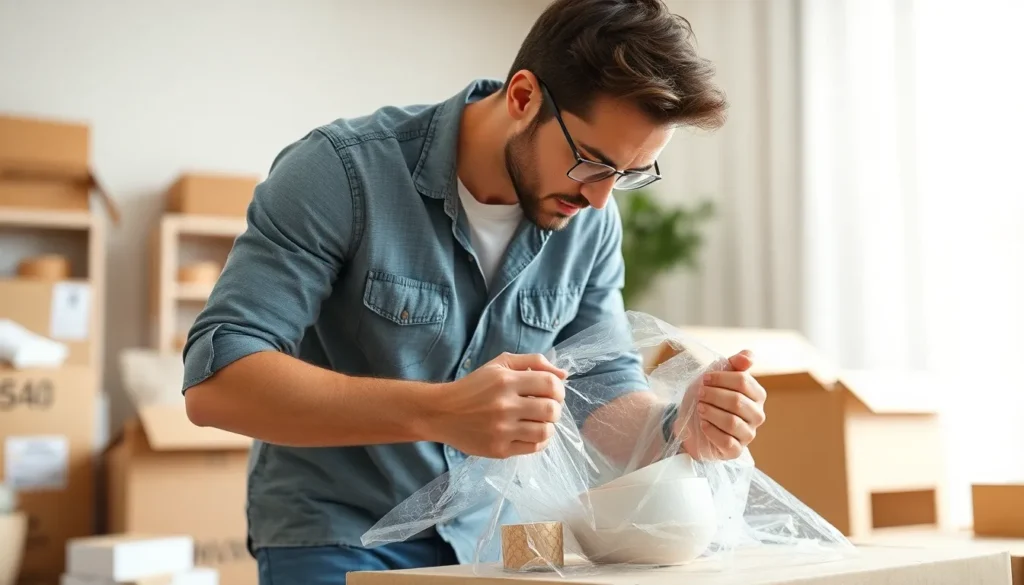Packing fragile items can feel like preparing for a high-stakes game of Jenga. One wrong move and everything comes crashing down. Whether it’s Grandma’s beloved china or that quirky glass sculpture from your last trip, ensuring these treasures arrive in one piece is no small feat.
Table of Contents
ToggleImportance Of Packing Fragile Items
Packing fragile items requires attention to detail. Properly <a href="https://asapproduce.com/senior-moving-services”>packing these items reduces the risk of damage during transit. Each component, such as cushioning, personalization, and proper containerization, plays a critical role in ensuring safety.
Protecting delicate belongings, like china and glass sculptures, is vital. A single misstep can lead to costly replacements or sentimental loss. Strategies such as using bubble wrap, packing peanuts, and sturdy boxes enhance protection.
Details matter. Delicate items demand specific packing techniques, which include wrapping each piece individually. This tactic prevents contact with other objects, mitigating the chance of breakage.
Using high-quality packing materials is equally important. Investing in strong boxes and cushioning materials provides the necessary support during transport. The right choice of packing supplies creates a reliable barrier against external forces.
Labeling boxes containing fragile items adds another layer of security. Clear indications signal handlers to exercise caution. Proper labels help maintain awareness, reducing mishaps throughout the moving process.
Prioritizing packing fragile items safeguards both physical and emotional investments. Failing to do so can result in more than just physical damage; it can lead to emotional distress and financial loss. By taking the necessary precautions, individuals can ensure their treasured belongings arrive intact and unharmed.
Materials Required For Packing


Selecting appropriate materials ensures fragile items receive adequate protection during transit.
Choosing The Right Packing Materials
Start with bubble wrap, a crucial cushioning material that absorbs shocks and prevents breakage. Next, packing peanuts or foam can fill empty spaces in boxes, minimizing movement while protecting each item. Consider using rigid boxes designed to withstand pressure. Strength matters when selecting boxes—double-walled varieties provide additional security for heavier items. Kraft paper also contributes; it serves as a barrier and additional cushioning layer. Opt for clear packing tape to secure boxes, ensuring no openings jeopardize contents. Each of these materials enhances protection, reducing the risk of damage.
Essential Tools For Packing
Gather essential tools before starting the packing process. A sturdy box cutter simplifies the task of cutting through packaging materials. Use scissors as backups to tackle any stubborn areas. A measuring tape assists in ensuring proper box sizes are selected. Markers come in handy for labeling boxes clearly; this process helps identify fragile items easily. Lastly, gloves can provide grip when handling delicate objects, preventing slips. Having these tools ready streamlines the packing process, promoting efficiency and safeguarding valuables.
Step-By-Step Guide To Packing Fragile Items
Packing fragile items involves careful preparation and the right techniques to ensure safety during transit. Follow these steps to effectively protect treasured belongings.
Preparing The Items For Packing
Start by cleaning each item. Dust and dirt can cause scratches or damage. Use a soft cloth for delicate pieces like china and sculptures. After cleaning, wrap each item individually in bubble wrap for superior protection. Secure the wrap with tape to prevent slips. Additionally, consider labeling items to track their placement during packing. This organizational step simplifies unpacking later. Use cushioned containers, such as pillowcases, for extra protection on particularly fragile objects.
Packing Techniques For Different Items
Employ different methods based on item type. For glassware, nest smaller items within larger ones and use packing peanuts to fill gaps. Stack plates vertically rather than horizontally to reduce pressure points. Wrap vases and sculptures in multiple layers of bubble wrap, ensuring coverage of all corners. When packing artwork, place cardboard between layers to prevent scratching. Seal boxes with heavy-duty tape, reinforcing edges to withstand shifting during transportation. Always mark boxes containing fragile items clearly, indicating the need for gentle handling.
Common Mistakes To Avoid
Packing fragile items requires careful attention. Skipping quality packing materials compromises safety. Using weak boxes increases the risk of breakage during transit.
Not wrapping each item individually is another frequent error. Grouping fragile items together can lead to contact damage, increasing the possibility of cracks or breaks. Bubble wrap should be used for each delicate piece, ensuring it remains cushioned and safe.
Ignoring empty space in boxes also creates issues. Packing peanuts or crumpled paper should fill voids to prevent movement. An unstable item risks shifting during transport, resulting in potential damage.
Labeling boxes incorrectly is a common oversight. Clear labels indicating fragile contents alert handlers to take extra care. Ensure labels are visible on all sides to enhance visibility.
Failing to seal boxes securely can lead to disasters. Heavy-duty tape should seal all seams, preventing boxes from opening unintentionally. Each box must withstand handling, allowing items to remain secure throughout the journey.
Lastly, neglecting to create a packing plan can complicate the process. A detailed checklist streamlines packing, ensuring no items are overlooked. Planning reduces last-minute stress and boosts effectiveness.





